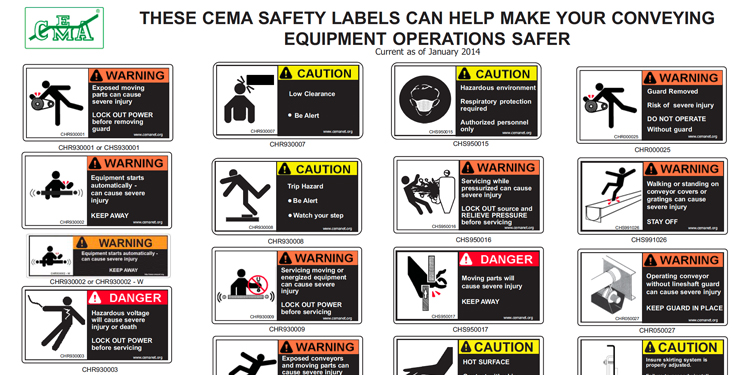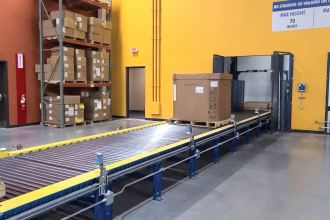Best Practices For Keeping Personnel Safe Around Conveyors, Sortation Systems

Keeping personnel safe and injury free is of critical importance to warehouse, distribution and manufacturing facilities everywhere. That’s often one of the many reasons why operations implement automated sortation and conveyor systems: to take over the movement of products and materials throughout a facility, significantly reducing the risk of ergonomic injuries due to pushing, pulling, or otherwise moving loads. As mechanical equipment, however, there are certain procedures that should be implemented to ensure that employees remain safe and injury-free while working around conveyor and sortation machinery. The members of the Conveyors and Sortation Systems (CSS) Industry Group of MHI recommend the following best practices:
Implement a training program. Only technicians and operators who have been trained in the use of the conveyor and sortation equipment should be allowed to access its controls or perform service and repair procedures. In addition to safety programs based on the Occupational Health and Safety Administration’s standards, each solution provider will have instruction, maintenance, installation and operation manuals that should be used to educate personnel about the equipment and its proper use.
Utilize safety labels and signage. A broad variety of standardized, peel-and-stick safety labels (both regular and severe duty materials and adhesives) and posters are offered by the Conveyor Equipment Manufacturers Association (CEMA). They come in both horizontal and vertical formats for placement on and around conveyor and sortation systems of all types, including general bulk handling, unit handling and sorting, pneumatic conveyance, and palletizing. These visual cues warn personnel about a variety of potential dangers posed by the equipment, including moving parts, high voltage, pinch points, guarding requirements, safe maintenance procedures, contact avoidance and more.
Install physical barriers or highly visible floor striping. To prevent personnel from walking or working too close to conveyor or sortation equipment, install safety barriers or paint warning zones on the floor to alert operators to the potential danger of coming too close to the equipment.
Don’t touch or ride on the equipment. Advise personnel of the dangers — such as injury or death — associated with climbing, sitting, standing, walking, riding or touching a conveyor or sortation system when in operation.
Only allow qualified, trained personnel to operate and perform maintenance. Only technicians and operators who have been trained in the use of the conveyor and sortation equipment should be allowed to access its controls or perform service and repair procedures.
Lock out all power sources prior to performing maintenance. Prior to servicing conveyor or sortation equipment, all power systems (electrical, gravity, hydraulic, air, etc.) should be locked out, blocked or released. The same applies to clearing jams.
Utilize safety guarding. Make sure guarding and covers integrated into the conveyor or sortation equipment is always in place and secure prior to operation.
Comply with equipment capacity limitations. Conveyor and sortation installations are engineered and built to match application-specific requirements about load size, weight, shape, distribution, desired handling speed, and more. Don’t introduce new items without first verifying that they adhere to the original specifications; otherwise jams, motor overloads, belt breaks, product damage, or loads falling off the conveyor could occur, increasing the risk of injuries to personnel.
Use controls properly. Do not modify or override conveyor controls. Ensure that pull cords and emergency stops are visible and accessible.
Want to learn more? Read the CSS-authored and recently published article with additional insights, “Personal Safety in the Workplace is Mission Critical.”



